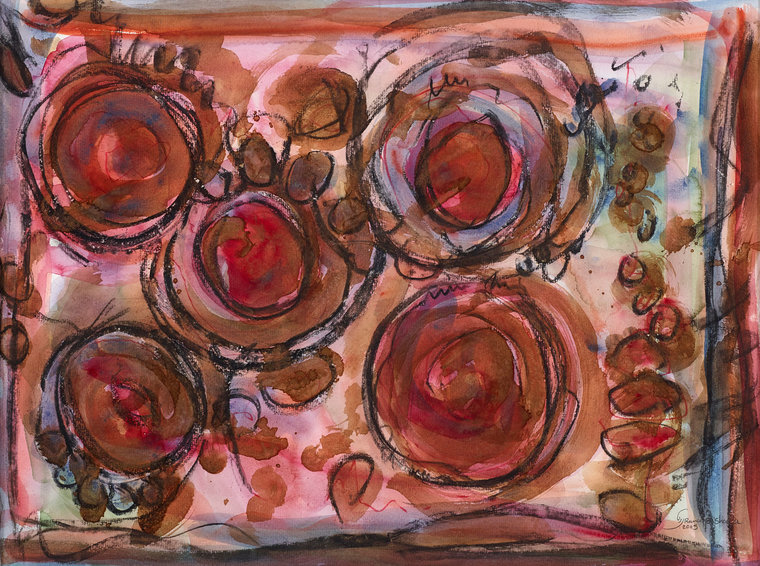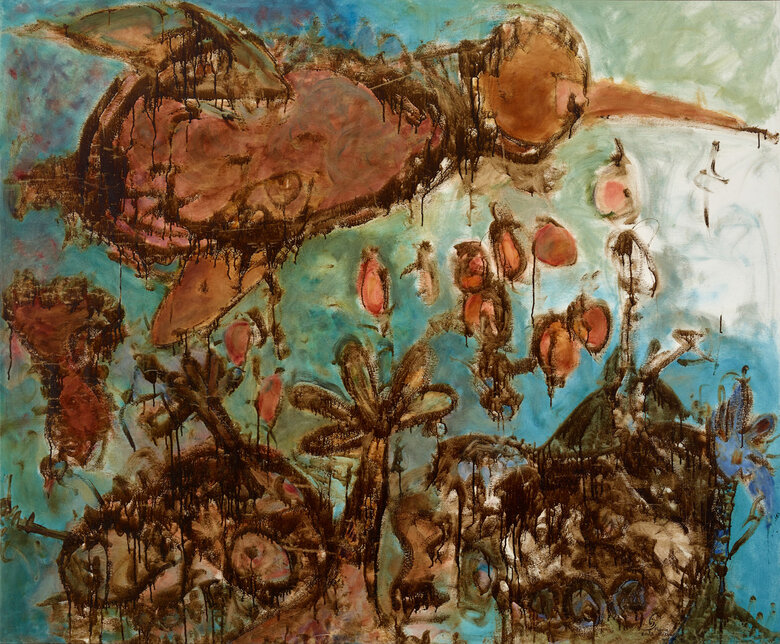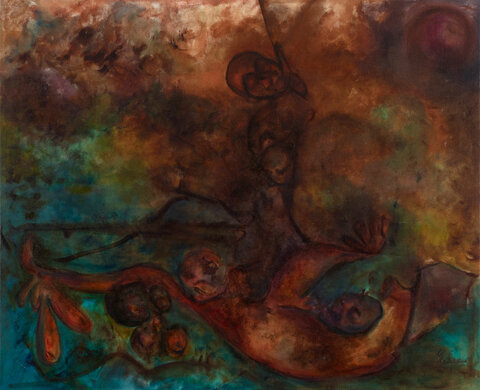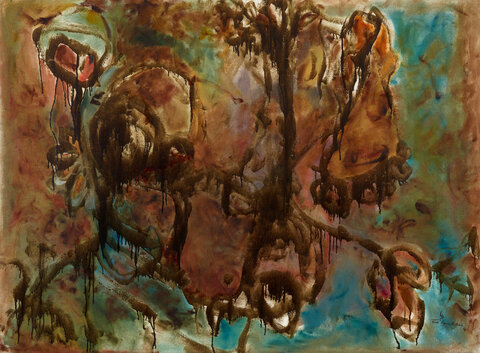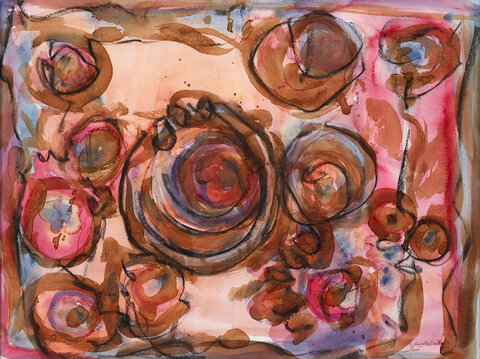Untitled, 2005, depicts an abstract visual interpretation of five prickly-pear cacti rendered in orange-red and chocolate-brown tones. To execute their work, the artist chose watercolor, charcoal, and natural henna – a red-orange pigment prepared from the Lawsonia inermis plant, usually used as a beautifying dye. The artist defines the five cacti with multiple black concentric circles and saturated red-orange henna painted against a pastel pink and brown background.
Similar in size, the cacti are placed slightly to the left of the rectangular canvas with one cactus in the middle; the cacti clutter occupies most of the painting’s horizontal composition. Each cactus carries a handful of small oval shapes resembling cacti axillary buds sprouting from its periphery. Again, the buds are delineated with black lines. The artist demarcates the canvas’s periphery with a rectangular frame of red-orange henna and black charcoal strokes.
To the Palestinian artist Rana Bishara, the cactus is a recurrent motif in her work. As a multi-disciplinary artist, she has used the plant in many ways to reflect on the Palestinian condition. Known as Sabra in Arabic, which means patience, cacti have become a symbol of resilience. Once the gatekeepers of Palestinian villages, cacti now stand as their only remnants. As such, they delineate the boundaries of destroyed towns and are a chilling reminder of the Palestinian struggle.
In Untitled, 2005, the cactus is not the only symbol the artist uses. The superimposed layers of translucent watercolors invite viewers to look for meaning beneath them. For example, Bishara paints the cacti in bright red, reminding us of the color of fresh blood. She mixes red with chocolate-brown, to create a color reminiscent of the earth and dried blood. Moreover, watercolor can flow freely on a canvas, resulting in stains that mimic bleeding or pouring tears.
Bishara herself has stated that her color palette alludes to the tragic interplay between life and death experienced by Palestinians. Her choice of material is also highly symbolic. Henna, the muddy dye, is usually used as a beautifying material for hand tattoos or hair dying. It adds an exotic color to the skin and hair – a common practice in Arab culture. Contrastingly, in Bishara’s Untitled, 2005, it became a vessel to depict an ugly reality. Charcoal, a rudimentary medium, is employed as a reminder of the difficulty incurred by Palestinian artists to access basic artistic materials under Israeli occupation.
Bishara’s symbolic imagery creates an ominous and, at times, a violent atmosphere that comes alive. The concentric forms, irregularly interrupted lines, and the different cacti sizes create a dynamic composition and a sense of motion. This is further bolstered by the repetitive cacti motif. The painting reflects the turbulence of the brutal Palestinian condition and turmoil since it seems constricted. The congested negative space, along with bold black borders which contour the cacti and the disquieting boundaries of the overall painting, convey a forcibly curbed energy and imprisonment.
As a Palestinian living in Israel, Bishara has used her highly political art as a form of resistance. "Give me a gun, and I will give you my art,” she said. In Untitled, 2005, Bishara uses symbolic imagery, centered around her beloved cactus plant, to portray the violent struggle of her people. In achieving both a ‘moving’ and ‘frozen in time’ depiction, Bishara masterfully captures the absurdity of the Palestinian condition.

